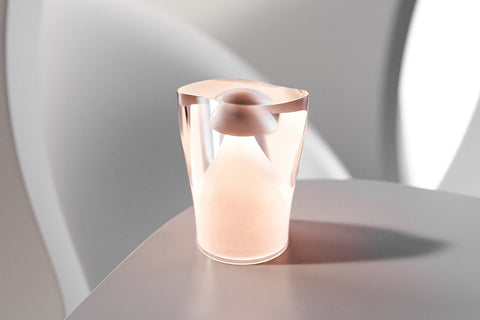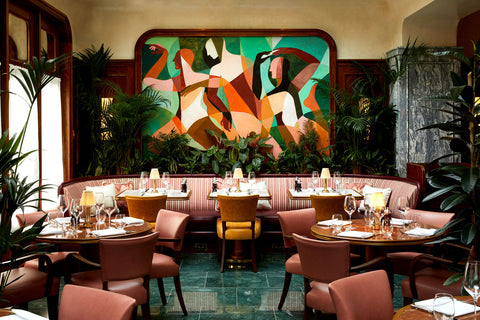Celebrating the best of Australian design and manufacturing
Dive behind the scenes in our exciting new feature, where we chat with the creative minds behind our most beloved lamps. Get an exclusive peek into their creative journeys and discover the inspiration that fuels their design process.
For the first part of this series, we sat down with multi-disciplinary artist Brad Allen-Waters, the man responsible for the creation of every Medusa Cordless Lamp.
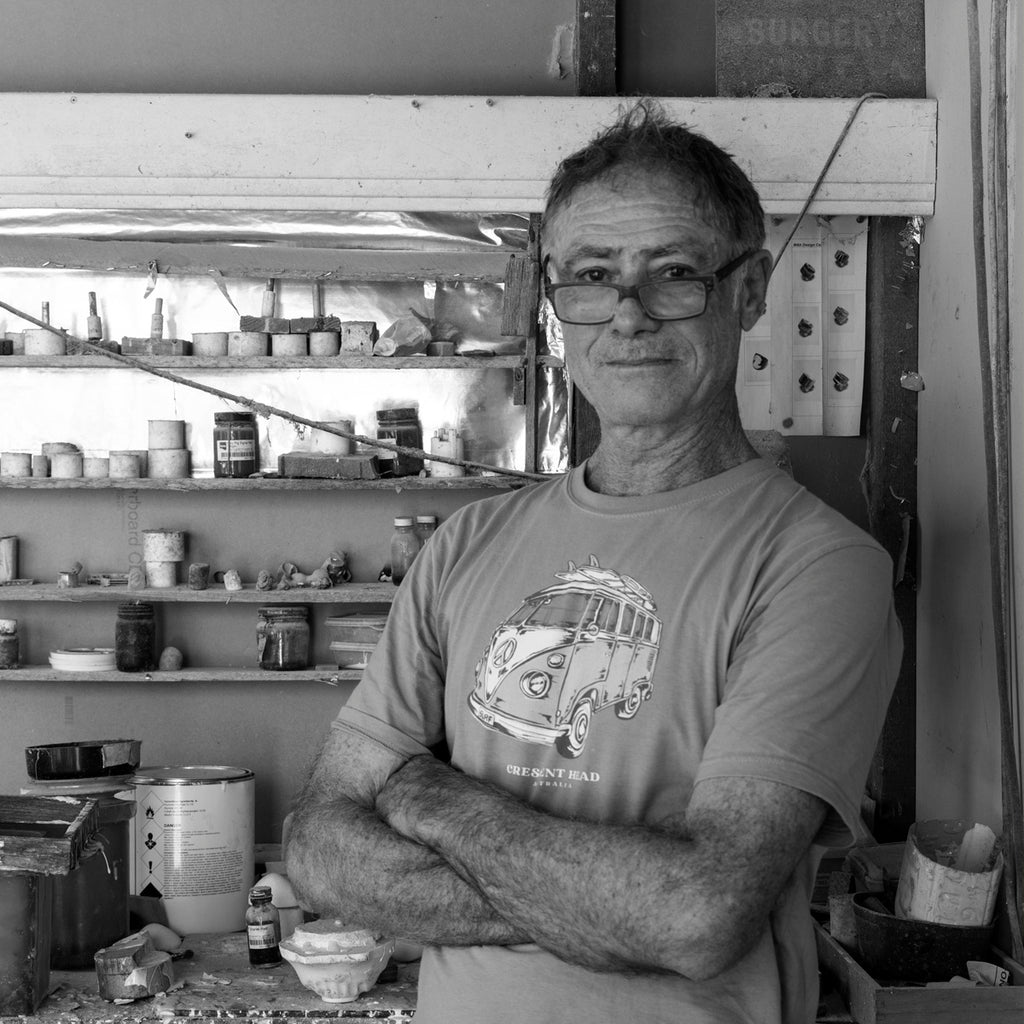
Portrait of Brad Allen-Waters in his Blue Mountains studio
How did you first venture into Art and Design?
In the sixties, I was immersed in surf culture, thanks to my Father. Fixing up surfboards introduced me to resin, laying the foundation for my artistic journey. The surfboards became a canvas for my art and i picked up the lamination skills with fiberglass resin.
When I left home, I moved to Woolloomooloo, where I would spend time creating art. The inner city was a hotbed of creativity with art schools, colleges and galleries in the surrounding areas. It was just too tempting to create and experiment with different art forms.
I later worked at the Australian Museum, where I was employed as an assistant to a British silicone craftsman who made the flexible skins for animatronic dinosaur exhibits. So, I learned all about silicone and how to mould the material.
And before Medusa, you met Peter the Founder of NEOZ and developed other lamps with NEOZ. Can you share how you met?
It came out of a collaboration where I was commissioned to do lighting in a room with a very high ceiling, and I needed an electrified system on the ceiling to bring these long-stemmed lamps down to table height. I'd been looking around at all the various low voltage light rail systems of the day, and the NEOZ system was the most attractive and it looked like the easiest installation. I contacted Peter and our collaboration grew from him seeing those lamps as he wanted to do a range based around my design, which was a refined and wirey aesthetic that I was working with at the time.

NEOZ lightrail system from the 1990s
How did your collaboration with NEOZ come about?
It was during my visit to his factory that I saw the (prototype) Medusa on a shelf. Peter mentioned that he could not produce them as it was a complex design and required a specialist skill. That's when I volunteered to have a go. And it turned out alright, coming up close to 20 years since I made the very first Medusa Lamp.
What was your creative process to reimagine and bring the Medusa Cordless Lamp to life?
I introduced a fine texture on the internal cavity of the mould. I've made a sand-coated mould to give it a beautifully stippled skin on the inside with almost an effervescence, the juxtaposition of a hard surface against the clarity of the resin and the polished curves of the outside.

The Medusa at The Lively Azabujuban, Tokyo
What challenges do you typically face working with that medium of resin
The highlight of the Medusa Lamp is the fact that it is an optically clear piece, so the big challenge is not to have one speck of dust in the resin. It's always about the cleanliness of the object and surrounding workspace.
The other challenge with Medusa is that it's a two-part mould. You have an internal reflector, that needs to sit nice and square during assembly. Making the mould assembly capable of holding and embedding that prebuilt reflector was a challenge, however these days I have a very efficient process after years of experience.
How long does it take to produce one Medusa Lamp?
Well, if you do not count the time that the resin has to set, then the actual production and finishing process to make one lamp takes a day. I might get two lamps made in a day.
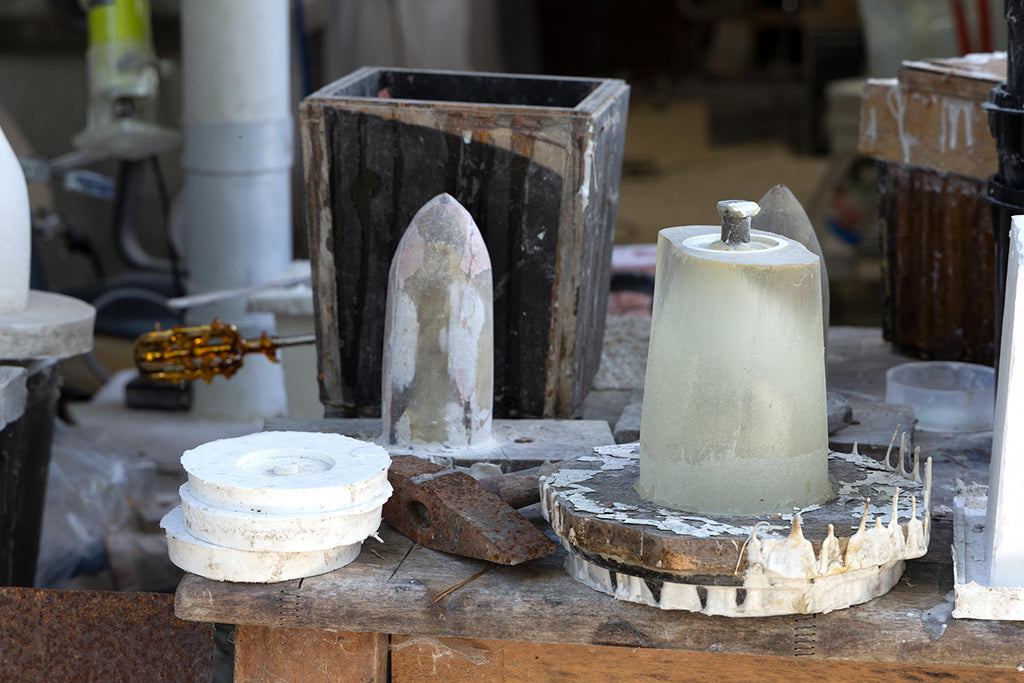 A Medusa resin mould at Brad's Blue Mountains Studio
A Medusa resin mould at Brad's Blue Mountains Studio
What are the most rewarding aspects of your work?
It’s the transformational process of taking raw material and turning it into a functional, beautiful object. It doesn't seem to matter how many times I do it, it always seems like a miracle at the end when you've moved from these, two smelly, sticky components to produce this attractive, functional object.
To get that beautiful finish, I must take my time, so while it's not physically demanding, I have got to be patient, follow my regime and do everything with focus and accuracy.
Outside the work you’re doing for NEOZ, what other projects are you developing?
I have an art practice, and I do a lot of kinetic sculptural work that involves lights, specifically lasers. I'm very interested in light-to-sound combinations, where sound is activated by light. So I've worked in collaboration with sound artists to produce objects that create patterns of light.
I have sculptures that light up in response to proximity. The containment series that I've been working on for a couple of decades, addresses my concerns about climate change and the very real threat of species extinction.

The Aesthetiscope Kinetic Light & Sound Sculpture The Altitude Project, 2017
If someone wants to see your work other than purchasing a beautiful NEOZ lamp, where might they see that?
As a contemporary artist, I do have a gig coming up in September at Cementa, which is a Biennial contemporary art festival in the post-industrial town of Kandos. My partner Miriam and I have been commissioned to do a piece for the town based on the town's history. Kandos was the cement-producing capital of Australia. All the cement used in the construction of the Harbor Bridge came from Kandos.
How do you navigate the balance between staying true to your artistry and your vision whilst also developing commercial products or meeting market demand?
I would love there to be more time, I am flexible because I'm not represented by a major gallery, and I don't have pressure to continually produce a huge body of work. I can do the work slowly and then when it's ready, shows will come up that will suit the piece and submissions are exchanged and that's how I work.
Now it's just very busy. NEOZ resin work is very popular, so I spend some time in my evenings to gently work on my own creative projects.
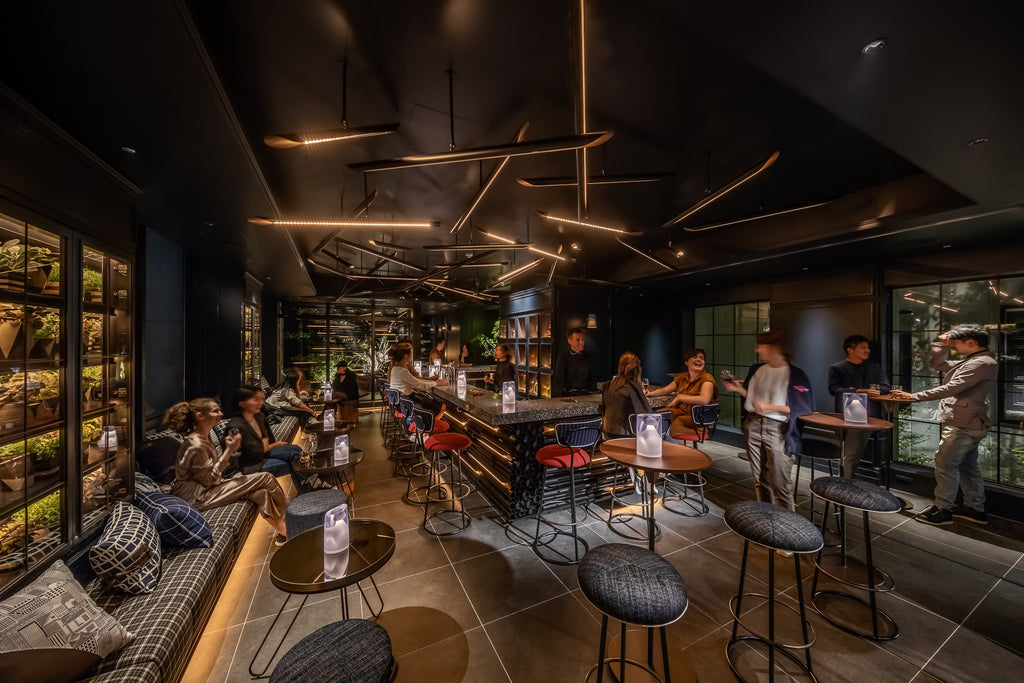
The Medusa at The Lively Azabujuban, Tokyo
Aside from resin, what other materials do you love to work with?
Metal. Steel, all kinds of metals. When I was living in those intensive artistic environments in the early eighties, a lot of the people that I spent time with were object makers. Sydney College of the Arts had a fantastic jewellery department back then, which was leaning much more toward object-making rather than traditional jewellery. The graduates that came out of that were just geniuses in my eyes, and I spent a lot of time learning through them and how to do that fine work.
You talked about sustainability. Can you touch on how important that is to you?
The lamps we make are as enduring as possible, so they last. Whilst resin is a plastic, of all the plastics it's probably the most benign. The very raw plastic resin that comes off the first stage is the filtration from oil. So, it's a byproduct of oil and it's not treated with anything. It is durable and lasts, so the NEOZ resin lamps will last for many years to come and that is something I am proud of.
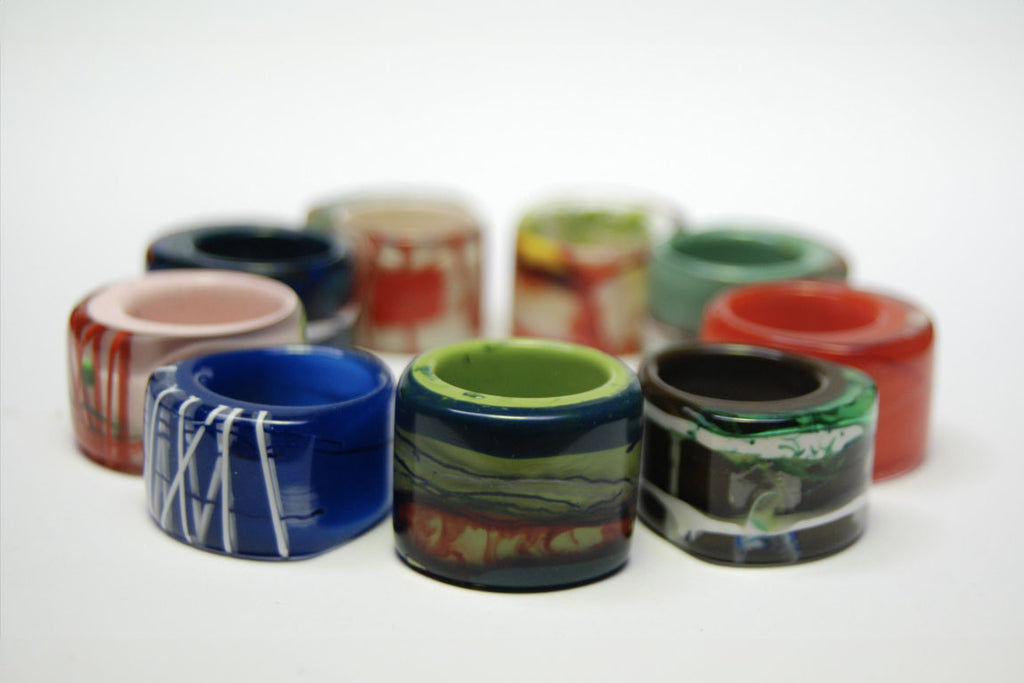
Handcrafted resin rings by Brad Allen-Waters
We hope you have enjoyed our interview with Brad, keep an eye out for his upcoming exhibition at Cementa, where he'll unveil a new piece inspired by the rich history of the Town of Kandos. If you're eager to learn more about Brad's artistic endeavours, be sure to visit The Slab, his studio gallery showcasing a diverse range of contemporary artworks.
As Brad reflects on his journey, from humble beginnings to artistic mastery, he remains grateful for the opportunities that have shaped his career. Through his work with NEOZ and beyond, Brad's passion for craftsmanship and innovation continues to illuminate the world, one exquisite creation at a time.

